After recently reading the first installment of famed Spidey scribe Gerry Conway’s latest “Gang War” storyline, I thought I’d continue my new series on Spider-Man underworld stories with a spotlight on the very first Conway “Gang War” story, the three part “Who the Heck is Hammerhead” (as featured in Amazing Spider-Man #113-115).
At this point in history, Conway had written a few issues of ASM, but his Hammerhead arc is arguably first clear demonstration of his unique style in terms of plotting and characterization. Remember, when Conway first started writing Spidey, he was just a teenager, a 19-year-old brought in to replace the great Stan Lee on arguably Marvel’s most popular superhero franchise. Conway could had very easily just continued “Stan the Man’s” grand, operatic style (which some have derided as being hokey). But either because of his youth, his brashness, or who knows what, he made a point of putting his distinct mark on the Spider-man character and his surrounding universe.
There’s nothing particularly groundbreaking about Hammerhead, the hard-headed Mafioso who debuted on the final page of ASM #113 and who gets his somewhat “interesting” origin story told in ASM #114. But simultaneously, as a true, bonafide, Tommy Gun toting mob boss, there’s also something fresh and unique about Hammerhead as it relates to being a part of Spider-Man’s famed rogue’s gallery.
His origin story certainly leaves a few things to be desired. Hammerhead is basically some street rat who is taken in by a mad scientist. The scientist medically revives Hammerhead and installs his indestructible flat top. In a bit of a final flourish to this oddball Frankenstein story, we learn that Hammerhead goes on to lead a life of crime because the last thing he sees before he passed out is a poster of a movie about famed monster Al Capone. Who knows how history would have been rewritten if the last thing Hammerhead saw before his transformation was a poster for 1972’s Cabaret starring Liza Minelli (on second thought, I want to read that comic).
Still, Hammerhead is clearly presented as being a cut above your average rank and file thug, and is in many ways the most intimidating underworld character created by Marvel since Wilson Fisk, aka the Kingpin, during the heart of the Silver Age. At one point, Spider-Man derides Hammerhead for needing to brandish a gun to be tough, but a quick demonstration from the mobster – he has one of his goons smack a weapon over his head to no effect – illustrates why he’s a force to be reckoned with. His desires and motivations are fairly straightforward in that he wants to run New York’s underworld. But the fact that this guy is seemingly indestructible while being calloused and uncaring about the blood and carnage left behind in his path, makes Hammerhead the worst kind of villain for Spider-Man to have to deal with. Typically, Spider-Man battles characters with their own twisted codes of honor and villainy like Doctor Octopus and Vulture, but Hammerhead is definitely portrayed as someone driven solely by id and greed.
And speaking of Doc Ock, he ends being the other half of the “Gang War” that drives the narrative of this story. The first chapter of this arc resembles nearly every other Spider-Man/Doctor Octopus battle from over the years, but takes a sharp and dark turn once Hammerhead enters the fray and attempts to assert his dominance over Otto. Of course, Otto is not one to kneel down before any villain, and he actually ends up fighting alongside Spider-Man for a brief sequence. But Conway depicts dear ol’ Doc Ock as being a bit over his head in dealing with Hammerhead’s fire power and might.
The storyline raises the interesting idea of whether or not Doc Ock should be considered a part of Marvel’s underworld element. Yes, Otto is clearly a criminal, and he certainly has been shown to have plenty of minions (an idea that was later explored to great effect during Dan Slott’s Superior Spider-Man run). But Doc Ock has never struck me as a mob boss in the vain of Kingpin, Silvermane or Hammerhead. Certainly the amount of stroke these bossmen wield would be viewed as enviable and impressive to Otto, but Doc Ock has long been a man of greater, world conquering ambition.
Yet, Hammerhead treats Doctor Octopus as if he’s the lone roadblock to grabbing the brass ring of underworld power. So much so that Hammerhead stalks Otto at his private home up in the suburbs of New York in an attempt to end his life, wipe out his minions and assert his control over things.
Strangely enough, Doc Ock’s “bossman” characterization and his unique dynamic with fellow crook Hammerhead is not even what I think makes this story so distinctively Conway-ian (or is it Conway-ish?). That reveal comes on the final pages of ASM #114 and more prominently in the arc’s concluding chapter: the Aunt May/Doctor Octopus “relationship.”
Even under Lee, there was clearly some kind of connection between May and Otto. In the epic ASM Annual #1, May naively complements Doc Ock as a kind and courteous man (despite the fact that he kidnapped her and held her and Betty Brant as bait for Spider-Man). Then, as Conway’s story notes, there’s a four-parter from the Lee/John Romita Sr. days where May takes on Otto as a boarder and she’s struck by what a gentleman he is. So an Otto/May relationship was not without precedent.
But still, holy cow, Conway pulls the trigger and actually puts these two characters together … officially. One of the secondary subplots for the Hammerhead arc deals with May mysteriously leaving her home because her feelings were hurt by Gwen Stacy (who accused May of being “too maternal” with Peter). When Peter gets a lead on where May might be staying and puts two and two together and discovers she’s actually living with Otto, it’s too much for him to emotionally take.
If that’s not enough of a dagger, even after Otto is captured and taken in by police, May chooses to stand by her man and stay back at their little compound in the suburbs, telling Peter she needs to give him his space. She acknowledges that her beloved is a legitimate supervillain, but concludes that she trusts and cares for him anyway.
Talk about putting your stamp on a character … Conway demonstrates himself as someone who was willing take some of the sillier ideas floated during Lee’s run and actually run with them in order to advance a story in a new way. I’ve personally never been a huge fan of Otto/May – as dense and naïve as May could be, one would have to think that she at least had the awareness to realize that the man she was supporting was the same evil genius known as Doctor Octopus. All the same, there’s no denying that this is a totally dramatic turn of events for Peter’s life. And any time a creator finds a way to make Peter’s secret existence of Spider-Man a point of heartache and misery for him is all good for me. May basically saying she trusts Doc Ock over Spider-Man is one way to truly drive that point home.

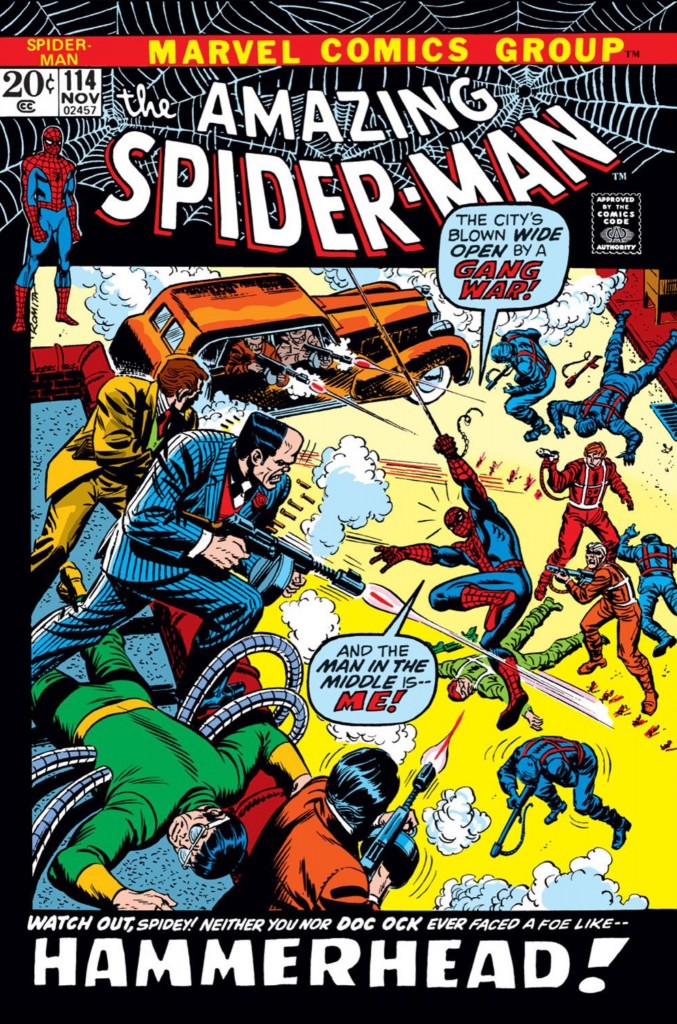
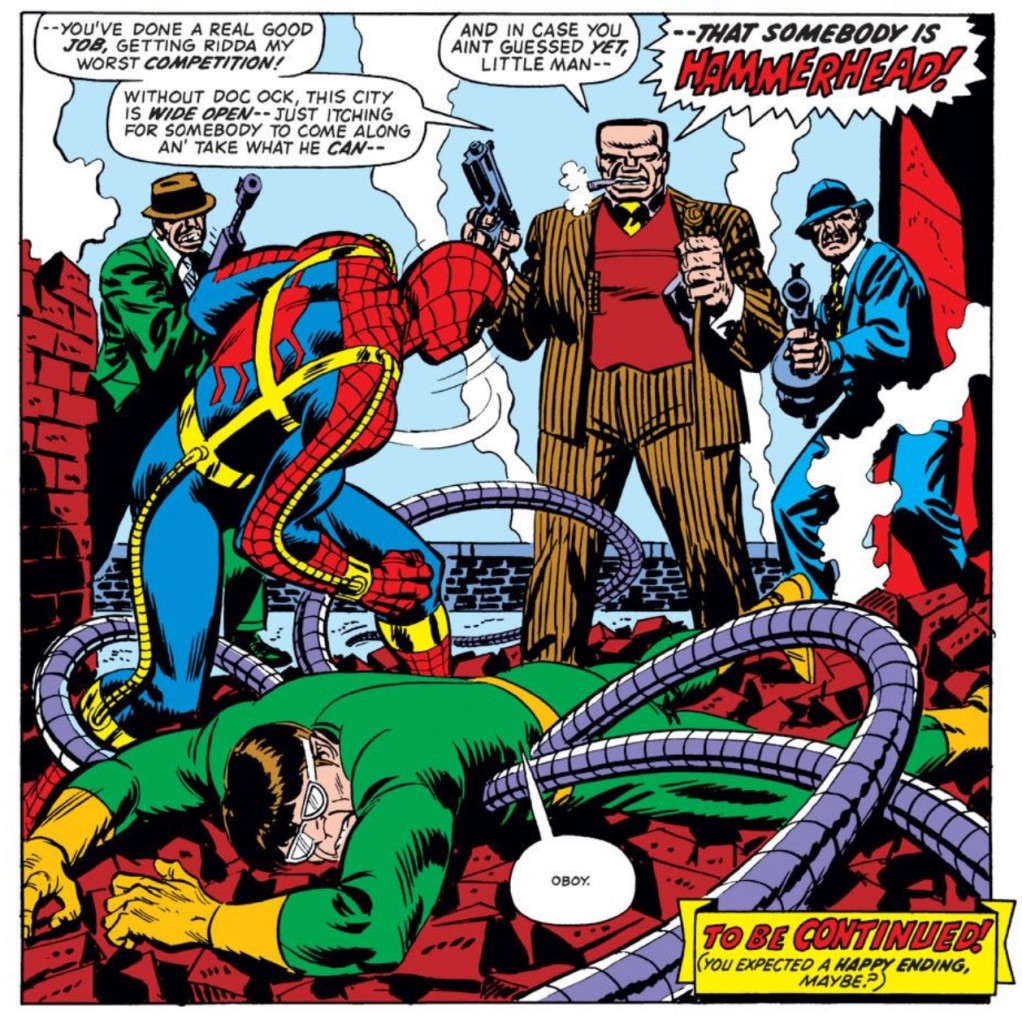
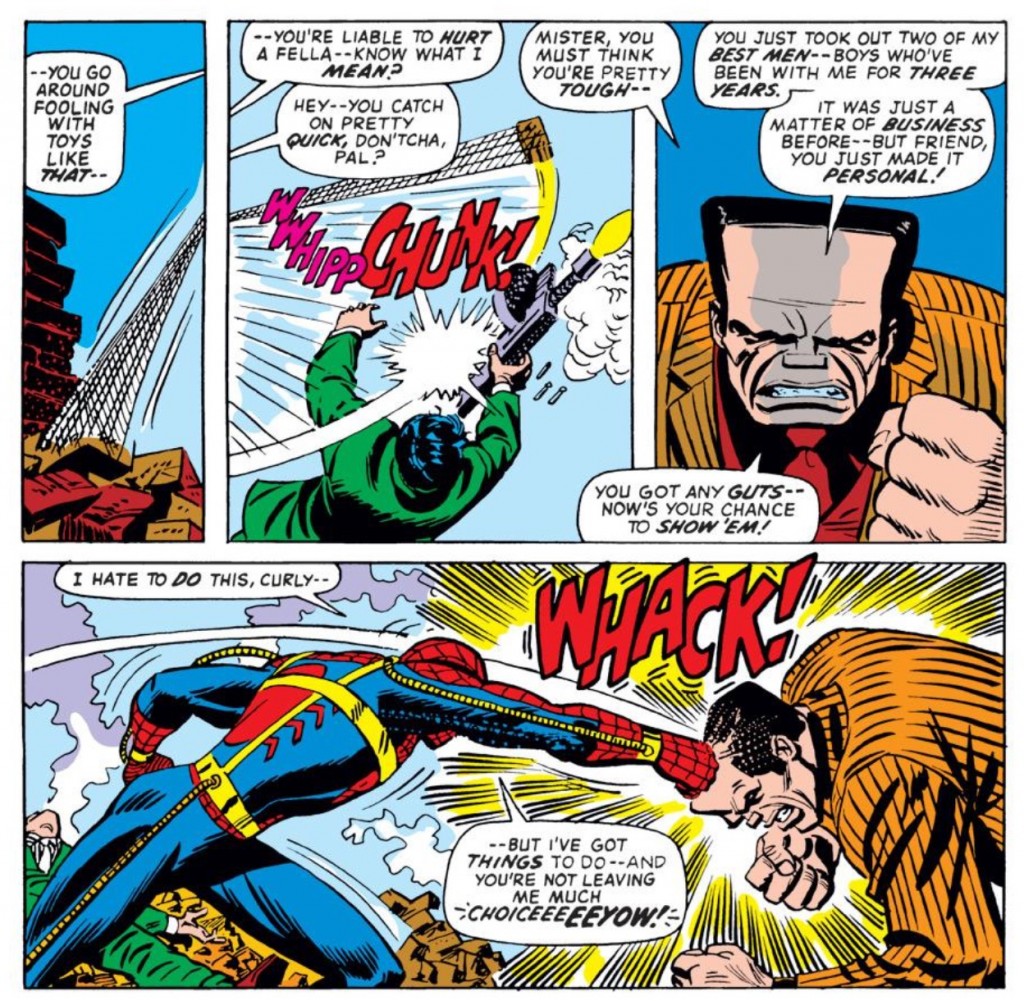
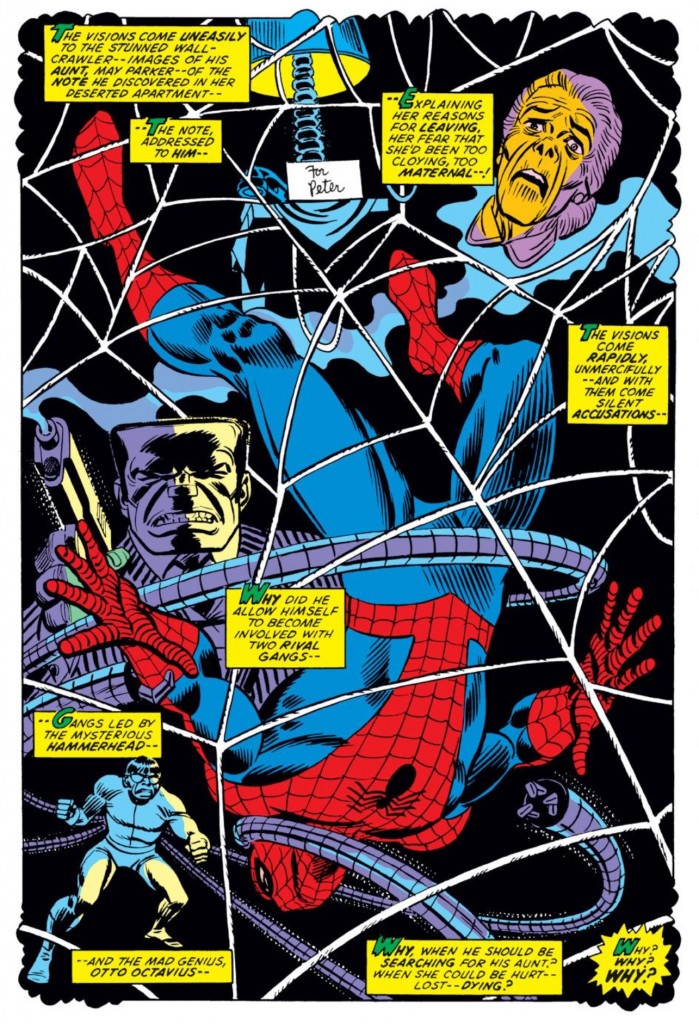
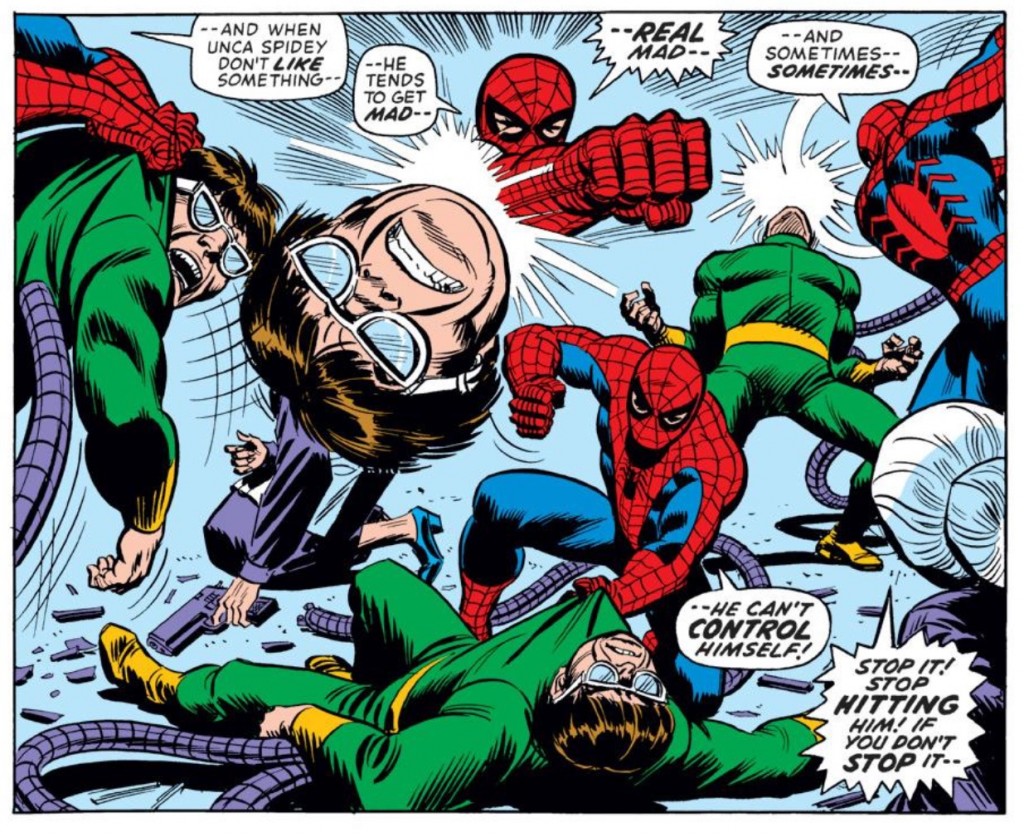

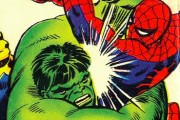
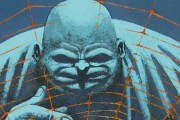
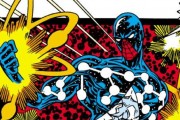
Doc Ock trying to take command of the criminal underworld has actually come up a few times. He mentions it as early as ASM #12, and his gang war with The Owl in Spectacular Spider-Man #73-76 was fought for similar reasons.
It also seemed like the scientist who created Hammerhead, Jonas Harrow, was being set up for bigger things by Conway and, later, Len Wein. Both writers depicted him as a behind-the-scenes mastermind-type. He ultimately wouldn’t amount to much, though, being exposed and used as a plot device in the aftermath of Marv Wolfman’s run.